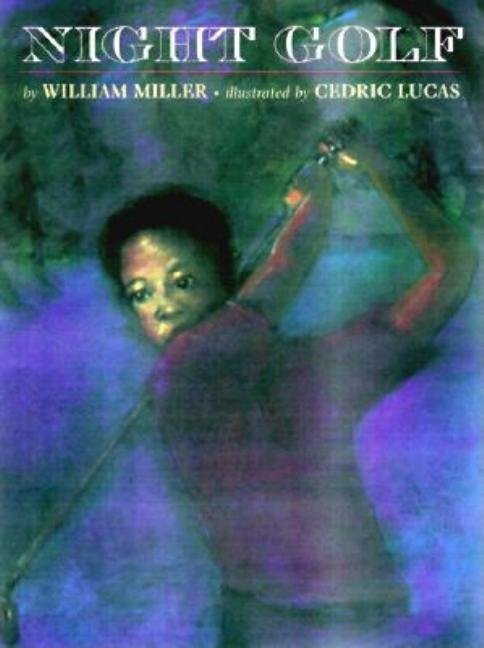Book Descriptions
for Night Golf by William Miller and Cedric Lucas
From Cooperative Children's Book Center (CCBC)
An author’s note indicates that “not long ago, professional golf could only be played by white golfers” and that in most parts of the U.S., African Americans were denied the right to play even at public golf courses even though some became caddies. In some places, African American golfers perfected their stokes by practicing on the greens in the moonlight. The story involves young James who finds a golf bag in the trash. Although he’s not allowed to be a play or work as a caddy at the town’s golf course, he’s befriended by a brown-skinned caddy there who recalls his own personal history with golf. The two meet at night so that James can begin learning the game. James stuns some inept white golfers with his skill. As coincidental and unlikely as the story seems to be, an important aspect of African American sports history is spotlighted and Tiger Woods’ current achievements move into a new perspective. Lucas’s pastel and colored pencil artwork do what it takes to illustrate moonlit scenes. A chronology of African Americans in Golf dated from 1899 to 1997 appears on the final page. (Ages 5-8)
CCBC Choices 2000. © Cooperative Children's Book Center, Univ. of Wisconsin - Madison, 2000. Used with permission.
From the Publisher
James loves sports, but hes too short for basketball and too small for football. Then he discovers golf. When he goes to the local golf course to learn more about the game, he finds out that only white players are admitted. He accepts a job as a caddy but fears he may never get the chance to play the game he loves. In this beautifully illustrated true-to-life story, another caddy tells James how to realize his dream: by playing at night. Set in the South of the late 1950s, this poignant story of an African American boy whose wish to play golf is hindered by racism is a Parents Choice Gold Award winner and an IRA Notable Book for a Global Society. ... perseverance and pragmatism come through clearly and are nicely underscored by ... impressionistic pastel-and-colored-pencil illustrations, which tell the story simply. The New York Times Book Review
Publisher description retrieved from Google Books.


